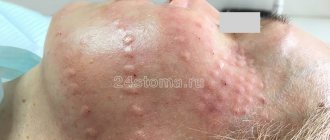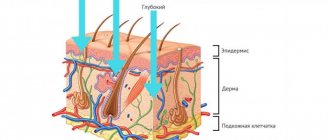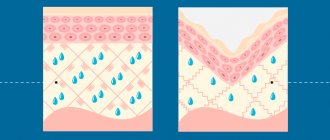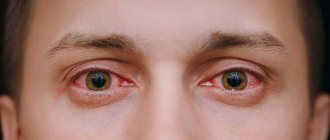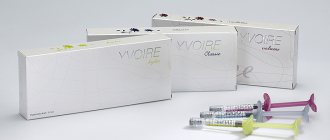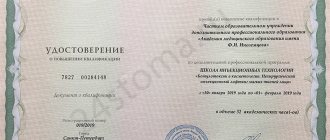Fillers can easily be called one of the most powerful things in the world of plastic surgery. Lack of understanding of proportions and excessive addiction to fillers can turn a beautiful woman into one of hundreds of faceless dolls. At the same time, a competent approach and skillful hands of a qualified cosmetologist can create a real miracle.
Facial contouring using fillers is currently one of the most popular and sought-after procedures in cosmetology. This was largely due to modern beauty trends, which dictate to society such ideals as clearly defined cheekbones, a prominent sharp chin and seductive plump lips. Fillers help improve the characteristics that nature gave to humans, or correct significant and not very significant defects. For example, lips of insufficient thickness or with pronounced asymmetry, sagging cheeks and even traces of skin rashes. But before you decide to go through with the procedure, there are a few things you need to know.
Contraindications
Of course, the first question the specialist will ask you will be about the presence of allergic reactions and the drugs that cause these reactions. But in the case of fillers, it is not enough to limit ourselves to only this issue. Injections also have a number of other contraindications that are typical for most surgical interventions:
- endocrine disorders,
- diabetes,
- problems with the immune system and the like.
By concealing the presence of any contraindications, including allergies, from the doctor, you can, at a minimum, get an unsatisfactory result, and at a maximum, get anaphylactic shock. To avoid seals at injection sites, allergic manifestations and other unpleasant consequences, before the procedure it is very important to undergo a high-quality medical examination and rule out the presence of one of these diseases.
It should be noted that many are frightened by the terrible consequences of using fillers, based on nothing. The body's reaction to fillers is strictly individual and cannot be categorically determined for everyone. To reduce all the risks listed above to zero, you definitely need to check your body in advance.
Elimination of complications
Severe swelling and allergic reactions caused by injectable fillers can be treated with oral corticosteroids or antihistamines.
Bubbles and bumps caused by contour fillers should resolve on their own. If this does not happen, the injectable fillers are removed by cutting and draining the tissue. Permanent compounds can be removed using local corticosteroid injections, surgical incisions, dermabrasion, or laser resurfacing. Blisters on the upper lip are eliminated with massage, incision and drainage, local hormone injections, or surgery.
As a rule, pain and discoloration of the injection site are the result of blockage of blood vessels. In such cases, you should immediately apply a warm compress, massage and apply nitroglycerin paste. If hyaluronic filler was used, hyaluronidase is injected to destroy it and relieve tension in the tissues.
Drug options
Previously, fillers based exclusively on hyaluronic acid were used. This substance has many benefits, and at this stage, preparations with hyaluronic acid still retain their popularity. But modern cosmetology offers other, no less practical and useful solutions. For example, if you are prone to the formation of edema, you can use a drug based on calcium hydroxyapatites.
Also no less popular is the lipofilling procedure, when the patient’s own fat tissue is used to add volume. This method has many advantages. First, donor material can be collected from most parts of the body. Secondly, the body, as a rule, does not perceive its own tissues as something foreign, so there is no need to be afraid of the risk of material rejection. Contouring requires very little fat tissue, so even a slender girl can afford it.
No procedures on the eve of important events
Modern injections are as safe as possible and do not leave long-lasting marks. Nevertheless, when attending the procedure for the first time in your life, it is better not to plan it later than three to four days before the important event. After the injection, slight swelling may occur. This is a completely normal reaction, but, of course, it does not add aesthetics. The appearance of small hematomas is also possible - approximately every third patient faces this problem. There are a lot of blood vessels in the skin, and even the most experienced doctor cannot get around them all. Small bruises go away quickly, especially if you use healing ointments recommended by your doctor.
Gym, training, gymnastics
You should not play sports after fillers, because during sports activities the body temperature rises, sweating increases, blood pressure rises and, as a result, blood vessels dilate.
This leads to swelling and redness, as well as the breakdown of hyaluronic acid. Along with sweat, salt is released, which irritates the skin, especially at the injection sites, which interferes with the healing of wounds and provokes infection of the skin in the injection areas.
The result can be corrected
If you didn’t achieve the desired aesthetics the first time, nothing bad happened. Yes, sometimes instead of an aristocratic oval and seductive full lips you get sharp facial features and huge lips. Fillers usually dissolve on their own over time. But when using hyaluronic acid filler, you don’t even have to wait until the expiration date. In this case, a special enzyme, hyaluronidase, is injected into the injection sites. This is done within the first two or three weeks after your first appointment. The enzyme breaks down fillers and allows you to easily and painlessly eliminate the results of manipulation.
Common Complications
All complications that arise after the introduction of fillers in cosmetology can be divided into the following groups:
- By time of occurrence: immediate or delayed reaction (Table 1)
; - Aesthetic significance: local or general;
- Reason for side effect:
- Reaction at the injection site;
- Reaction to incorrect administration;
- Allergy or hypersensitivity;
- Vascular reactions.
Table 1. Side effects depending on time of occurrence
| Early (from several days to several weeks) | Delayed (from several weeks to several years) |
Injection site reactions:
| Granulomatous inflammation |
Allergic reactions/hypersensitivity:
| Nodules, inflamed or not |
| Lumps formed by improperly distributed drug under the skin | Migration of the injected filler |
| Tissue necrosis | Scars |
| Embolism | Asymmetry |
Injection site reactions
Swelling, redness, bruising, pain, itching and infection may occur at the site of the skin piercing. Swelling and bruising are considered normal and usually go away within a few days. They can be reduced by applying pressure to the injection site and applying an ice compress to it. In addition, you must stop taking medications that prevent blood clotting. Rare cases of recurrent spasmodic tumors appearing after drinking alcohol, exposure to the sun or excessive physical activity have also been reported. This effect can last for years.
Infections are rare and present as one or more inflamed nodules that are treated with antibiotics. Some experts suggest that this kind of inflammation is the result of the action of bacteria (for example, staphylococcus or propionic acid) on the surface of the biofilm around the filler. Therefore, injections are not performed in areas affected by infections. There is no evidence that fillers provoke a recurrence of the herpes virus, however, for those for whom “fever” on the lips is a frequent occurrence, it would not hurt to use an antiviral agent.
Incorrect introduction
Cases where the filler is clearly visible under the skin are the result of incorrect injection technique. Depending on the type of product (especially hyaluronic acid fillers), small nodules or blue spots may form under the skin. The latter are formed due to hemosiderin (an insoluble protein) produced during interstitial bleeding. Small nodules are treated with local massage, suctioning, or incision followed by drainage. Hyaluronidase is used to destroy nodules or the filler itself, visible under the skin. Hyaluronic fillers require a preliminary skin allergy test.
If the Artecoll filler is not injected deeply enough, constant itching, redness and even hypertrophied scars may occur. The defects caused by hyaluronic fillers can be reduced with local corticosteroid injections. Superficial injection of Radiesse fillers will result in the formation of white bubbles under the skin; they need to be punctured and the contents squeezed out. Injecting silicone directly under the skin will result in fibrosis and granulomas, nodules and textural changes. Granulomas and scars may occur over a period of three weeks to several years.
Accidental intramuscular injections of fillers (with the exception of preparations based on hyaluronic acid and collagen) will inevitably lead to their migration and the formation of unwanted lumps and compactions. For the same reason, Radiesse injections are not given into the lips: constant contractions of the annular muscle provoke the formation of subcutaneous nodules.
Allergy and hypersensitivity
Depending on the drug administered, various reactions occur.
- Collagen.
In 1.3% of cases, bovine collagen may be immunogenic. Within 10 days after the first injection, there is a possibility of formation of erymatous, compacted nodules under the skin. About 1-3% of patients may still experience a negative reaction to the filler, even if the skin test is negative. Therefore, it is recommended to do 2 bovine collagen allergy tests with an interval of 3-4 weeks. If these symptoms do not go away on their own, they can be easily relieved with oral glucocorticoid hormones. - Hyaluronic acid fillers.
A reaction to a filler injection can occur either a month or years after the injection. Such phenomena are usually asymptomatic; in some cases, hyaluronic fillers cause erythema and swelling. They are treated with local corticosteroid injections. The dosage depends on the severity of the lesion; if necessary, injections are repeated after 4-6 weeks. Some practitioners use hyaluronidase in the hope that its breakdown will reduce side effects. - Poly-L-lactic acid
. During clinical studies, 3-4 months after injections (sometimes the period is reduced to 1 month). Sometimes the injection of fillers is accompanied by the appearance of nodules on the skin. They can be easily felt, but not visible. The exact nature and mechanism of their formation have not been established, but to avoid them, filler injections must be done under the dermis.
Vascular reactions to filler injections
Skin necrosis as a result of compression or blockage of blood vessels is a rather rare consequence. Most often it occurs in the region of the glabella, where there is no auxiliary blood circulation. Sometimes cases of ischemia and necrosis occur in the nasolabial area, due to the anatomy of the vessels in this area. To avoid such complications, it is recommended to use lighter fillers for contouring, inject them slowly, constantly moving the needle. Injecting your own fat can cause the same side effect. This can be avoided by introducing the required volume of filler for contouring in several sessions.
After plastic surgery with fillers, it is important to follow your doctor’s instructions.
The most important thing to remember is that after visiting a specialist, be sure to strictly follow all the recommendations given by the doctor! Otherwise, the result is not guaranteed. Neglecting the requirements for the recovery period can lead to uneven distribution of the drug or failure to obtain the much desired volumes and forms. An important rule is that you must categorically abstain from drinking alcoholic beverages and foods for the day after surgery. For four days after the procedure, a ban on facial massage and the use of blood thinning drugs (like aspirin) is imposed. And for a month - no sauna or solarium. Approach the doctor's requirements consciously, and the result will not be long in coming.
What should not be done after lip contouring?
In the first few days it is prohibited:
- Eat nuts, seeds, hot, spicy, salty foods.
- Smoking. This leads to inflammation and dry skin.
- Drinking alcohol.
- Use lipsticks, glosses, and other decorative cosmetics.
- Make faces, laugh widely, stretch your mouth.
General recommendations:
- Alcohol-containing medications should not be used to relieve swelling.
- Use low-grade cosmetics or expired products.
- Expose your lips to ultraviolet rays.
Fillers are a regular procedure
As mentioned earlier, fillers tend to dissolve. On average, this occurs a year and a half after the injections, but the duration of action may vary depending on individual indicators. After this, a second visit to a specialist is required. The only exception is the lipofilling procedure. With a properly administered injection, your own lipid cells will take much longer to dissolve, about three to five years. Sometimes even longer - this again depends on individual indicators.
